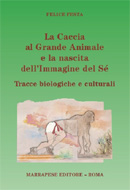 festa2face
festa2face
Frequently a researcher comes up with a theory that he would like to demonstrate and would spend his entire life working on it and consequently introduce an error called “bias”, an error of method, due to the fact that he becomes emotionally involved with his work. This book, instead, was born from a different need. It shouldn't have been written, because the heart of everything is only the necessity of almost 30 years of clinical practice resolving practical problems of patients with postural syndrome, tension headache, and facial malformations. This continuous effort has lead to the creation of repeatable and objective clinical protocols for patients ailing from this syndrome. They are summarized in the need for everyone to “advance” if even for a temporary amount of time, the mandible 1 to 2 mm, with the goal to reduce the pressure on the retropharyngeal and cervical musculature, that has an increased tension and inverts the physiological cervical curvature followed by the lombosacral sections. All this due to an evolutionary factor. In the span of 15,000,000 years, the maxillary and mandibular bones have progressively flattened in order to allow Homo Sapiens an erect posture increasingly more verticle and lasting. Unfortunately the mandible being composed of compact bone in comparison to the maxillary bone, has responded less to the shortening creating an imbalance in their length. The mandible remaining slightly longer determines a constant painful push on the cervical spine, the so called “curse of the erect posture” that almost all Homo Sapien adults pay as a tribute for the conquest of the erect posture. Festa has demonstrated with a series of controlled clinical-group researches the differential effecacy of different mandibular advancement therapies, the goodness of the assumption, confirmed by the numerous amount of successful treated patients at the Department of Orthodontics and Gnathology at the University “G.D'Annuzio” in Pescara-Chieti. Taking into consideration the efficacy of the therapy, the researcher wonders about the reason for this differential shortening. The first answers to this “enigma” couldn't have but of a genetic explanation. Perhaps looking back at the origins of our closest ancestor, the chimpanzee, we would have been able to understand the evolutionary reason of this curse. The rest....the author leaves to your curiosity. This, however, is probably only a first step towards a link that we hope will continuously grow between primatologists and medicine.Summing up Damasio's thoughts on the basis of genetics, of Anthropology, of evolution of pain therapy in postural disorders of sick patients that were long thought to be incurable, and finding in the actions of our predecessors those innate behaviours that Spinoza sensed, but were for a long time the “primum movens” of every human action, this is the goal of a deep voyage within the human mind that will surprise you because of its being current in historicity. Why is the mind the idea of the body? Which are the deep biological groundworks of our behaviours? Are they largely innate because our predecessors, the anthropomorphic monkeys first, and then the hominids afterwards have carried out the same gestures and the same actions for 15,000,000 years? Which are the biological bases of brain feeling? With referral to the most recent results of the studies of genetic evolution, of Anthropology, of Physical Medicine, of Cognitive Neurosciences, of Gnathology and Posturology, in part carried out by the Author's research group and by the Departments linked to the University “G. D'Annunzio in Chieti -Pescara, Festa proposes a biological and behavioural criticism to Damasio's answers. Where are feelings born? Why are they needed? What are they? In this analysis Festa's clinical experience,based on muscle activity, positions itself at a different level yet parallel to Damasio that in turn concentrates on the CNS:it does not concern patients that have been dissected at various levels of the central trineuronic path and that suffer from an incongruent adaptability of their genetic inheritance from different groups of hominids with an erect posture that from Festa's point of view represents the “protosè of Demasio”.
A great struggle, a battle with widespread waste of genetic resources are involved in a fight that has been lasting for 15,000,000 years.The struggle for the conquest of the erect posture has written in the history of our genetic inheritance, a ceaseless effort of man to reach a more and more profound evel of selfconsciousness, that homeostasis at a superiore level, that is not only a precariousituatioof equilibrium between life and death, but a superior wellbeing that man strives for. This book conveys on new grounds the mind-body debate, reasoning, making us discover that most of our actions and feelings are nothing other than “dejavus”. Our Author intends to make us think of the reasons of our past actions in relationship to those of the future, and not in order to correct them but perhaps guide them in the tide of behaviours that governs the action of man and his ancestors for millions of year
